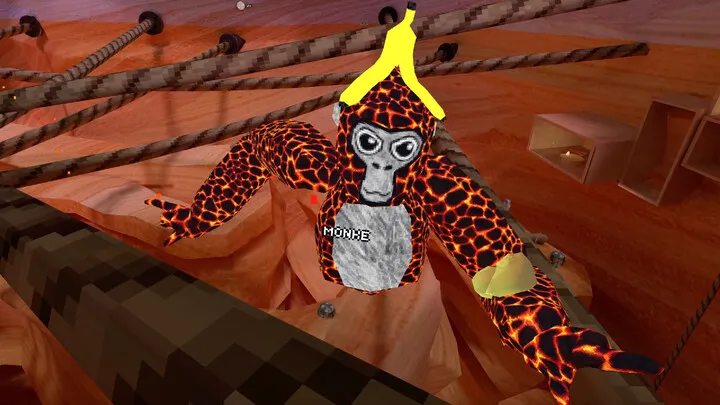Introduction
99 Nights in the Forest is a survival horror game that plunges players into a mysterious, procedurally generated woodland where every decision matters. Combining resource management, stealth, exploration, and combat, the game challenges both new and experienced survivors. This guide provides comprehensive strategies, mechanics insights, and hidden secrets to help players endure all ninety-nine nights. From managing food and water to hunting, crafting, and defending yourself, this guide prepares you to thrive in one of the most atmospheric survival experiences in recent years.
1. Understanding the World of 99 Nights in the Forest
The forest is more than a backdrop—it’s a living, breathing entity that reacts to your actions. Procedural generation ensures no two nights are alike, keeping players on constant alert.

Environmental Awareness
- Audio Cues: Listen for rustling bushes, snapping twigs, and distant animal calls to detect prey, predators, or supernatural threats.
- Day-Night Cycle: Daylight improves visibility, while nights increase danger. Fog, rain, and storms dynamically affect movement, line of sight, and resource spawning.
- Resource Behavior: Wildlife behavior and resource locations change with weather and time, requiring adaptive strategies.
Tactical Considerations
Recognizing environmental cues is essential. A sudden lull in sounds may signal an approaching predator, while continuous ambient noises can mask your movements.
2. Preparing for Your First Night
You start with minimal gear: a basic knife, a torch, and a half-full water flask. Balancing exploration and caution is key.
- Scavenging Essentials: Collect flint for fire starters, dry branches for fuel or weapons, and edible plants for sustenance. Always prepare or boil plants that may be poisonous.
- Temporary Camp Setup: Choose elevated areas near water sources to avoid flooding. Build a small fire ring and use fire sparingly to avoid attracting predators.
- Basic Shelter: Even a simple lean-to can protect against weather and minor threats.
First-Night Strategy
- Avoid venturing too far from your starting area; gather nearby resources first.
- Observe wildlife and potential threats before exploring deeper into the forest.
- Stockpile essential materials to prepare for subsequent nights.
3. Crafting and Resource Management
Crafting is fundamental to survival and progression. Experimentation often reveals hidden recipes.
Basic Tools
- Stone Axe: For chopping wood and basic defense.
- Simple Spear: For melee defense and hunting.
- Temporary Traps: Use vines and branches to catch small game.
Advanced Crafting
- Rare Materials: Crystals, enchanted wood, and iron ore allow the creation of advanced weapons like crystal-tipped spears or stealth cloaks.
- Crafting Stations: Build a forge and a workshop near your main base to combine rare resources.
- Hidden Recipes: Keep a crafting journal to track effective combinations and prevent resource waste.
Managing Food and Water
- Preservation: Smoke or dry meat to prevent spoilage.
- Water Safety: Always boil water after rain to avoid contamination.
- Backup Supplies: Carry spare torches and repair kits; losing light or tools mid-combat can be fatal.
4. Navigating the Forest and Avoiding Predators
Movement and stealth are essential survival skills.
- Crouch Walking: Minimizes noise and reduces visibility.
- Tracking: Deer tracks lead to food, while claw marks signal predator territory.
- Predator Behavior: Wolves hunt in packs, bears are solitary and powerful, and supernatural entities are unpredictable. Use fire or traps to defend yourself.
Stealth Strategies
- Avoid low-visibility areas at night.
- Use natural ambient sounds to mask your movements.
- Retreat strategically if pursued, setting traps to slow predators.
5. Building and Upgrading Your Shelter

Shelters provide safety and psychological reassurance.
- Initial Shelter: Lean-tos or small wooden huts protect against rain and wind.
- Fortified Bases: Upgrade with stone walls, reinforced doors, spiked barricades, and alarm bells.
- Outposts: Build multiple emergency shelters for safe retreats during long excursions.
Lighting Strategy
- Place torches or lanterns strategically to deter minor predators.
- Use fire sparingly to avoid becoming a beacon for dangerous creatures.
6. Advanced Crafting and Tool Upgrades
Basic tools eventually become insufficient as the nights grow more dangerous.
- Rare Materials: Crystals, enchanted wood, and iron ore are key to advanced weapons and armor.
- Crafting Stations: Use for metalworking and combining complex items.
- Hidden Combinations: Enchanted bark + wolf pelts → stealth cloak.
- Documentation: Maintain a crafting journal to track recipes and resource efficiency.
7. Managing Stamina, Health, and Sanity
Survival is about more than avoiding predators; your physical and mental state matters.
- Stamina: Avoid unnecessary sprinting; consume carbohydrate-rich foods to recover energy.
- Health: Keep bandages and herbal remedies handy.
- Sanity: Lack of rest or light can induce hallucinations. Fires, shelters, and calming sounds help maintain mental stability.
- Auditory Awareness: Learn to differentiate real threats from sanity-induced illusions to avoid wasting energy and drawing predators.
8. Exploration Strategies and Hidden Secrets
Exploration provides rewards but involves high risk.
- Landmarks: Use stone piles or broken branches to mark paths.
- Hidden Locations: Caves and ruins contain rare resources, lore, and shortcuts; often guarded by formidable enemies.
- Dynamic Events: Blood moons or meteor showers alter enemy behavior and resource availability; exploit these opportunities for unique rewards.
Planning Expeditions
- Explore during daylight for optimal visibility.
- Carry sufficient food, water, and survival tools.
- Always have an escape plan or temporary shelter along your route.
9. Multiplayer and Co-op Survival Tactics
Co-op play enhances survival prospects and allows for complex strategies.
- Role Assignment: Allocate tasks—gathering resources, fortifying shelters, scouting threats.
- Communication: Use voice or text chat to coordinate in real-time.
- Enemy Scaling: More players trigger stronger predators. Rotate watch duties to maintain safety.
- Team Exploration: Split squads can tackle distant ruins or bosses; establish rendezvous points for emergencies.
10. Preparing for the Final Nights

The last 10–15 nights present the greatest challenges.
- Maximize Gear: Upgrade all weapons, armor, and traps to their highest tiers.
- Stockpile Supplies: Carry enough food, water, and healing items for long expeditions.
- Fortify Shelters: Multiple defense layers, traps, and emergency exits are essential.
- Mental Preparedness: Maintain composure, stick to practiced strategies, and avoid panic in high-pressure situations.
Conclusion
99 Nights in the Forest is a complex survival experience testing strategy, resourcefulness, and mental resilience. From understanding environmental cues and day-night cycles to crafting advanced gear, managing stamina and sanity, and coordinating in co-op, every choice impacts survival. Embrace challenges, learn from mistakes, and savor the journey as you navigate a forest filled with predators, secrets, and tension. Completing all ninety-nine nights isn’t just about reaching the end—it’s about mastering the survival experience itself.

















